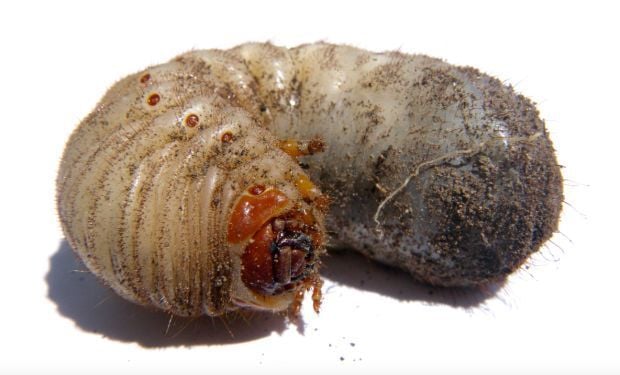Q: I saw lots of these bugs at the community garden this morning. They are massed on the open pods of a vine-like plant that has grown up the chain-link fence. The pods are about 3 inches long, brown-gray, and with with a tail or point. When open, they release a mass of cotton-like fluff. What the heck are these?
A: They are milkweed bugs (Oncopeltus fasciatus), and the plant is climbing milkweed vine (Funastrum cynanchoides). In the photo you sent, I see mostly nymphs. These young bugs do not have fully developed wings. Instead, they show wing buds, the two small, black, miniature, wing-shaped parts on their backs. There is one adult in the photo, showing fully developed wings with a black stripe across the middle of the body.
Like monarch and queen butterfly larvae, these milkweed bugs are protected from predators by ingesting the milky sap from this plant. The sap contains cardiac glycosides that can harm predators. Their red color gives the warning to potential predators that they are hazardous.
Since these insects stick with that plant, and that plant is probably not what you are growing in your community garden on purpose, what you do about them is a matter of preference. Some consider the milkweed a weed, while others like to attract butterflies.
Q: We are rejuvenating an in-ground garden, the Desert Meadows Park in Green Valley, to create a demonstration garden for folks with limited space, resources and physical limitations. The bed we were given has a major grub infestation. Any information on how to manage the grubs would be appreciated. The Green Valley Garden Club’s website has a good section on the Desert Meadows Park.
A: I visited the Desert Meadows Park during a recent trip to Green Valley. It’s a very nice place, and you all have done a great job with it. Grubs are always a potential problem, but sometimes not a big deal. There are a wide variety of beetle grubs we might find in a garden. Common types are the whitish, C-shaped scarab beetles.
There are a few species in this family you might find, so identifying the species is helpful, and counting the number you find per square foot is how we determine if treatment is necessary. Often in a garden plot, you can manually remove them and feed them to your chickens or toss them into an open area where other birds are likely to find them.
Identification of scarab grubs is based on the size sometimes, and examining the back end for patterns of hairs. Not everyone likes to get that close to the butt end of a grub, so I can help if needed. Once you know the identity, the life-cycle information will help determine the host plants they feed on and when the best time of year is to manage them.
Peter L. Warren is the urban horticulture agent for the Pima County Cooperative Extension and the University of Arizona. Email questions to tucsongardensage@gmail.com





